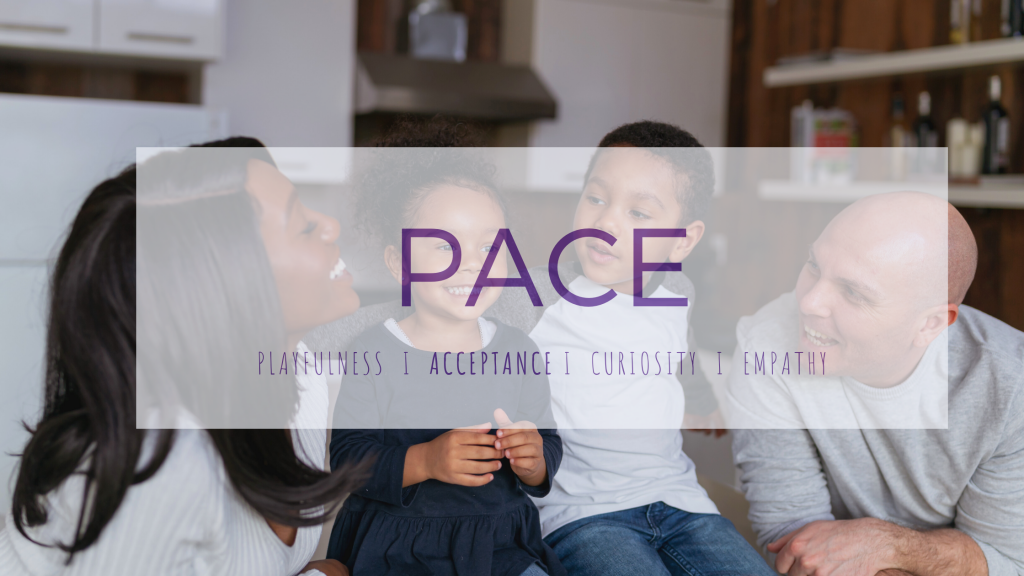
We’ve talked about the role of playfulness in PACE, to keep our nervous systems in an open and flexible state, and showing that there’s no threat, so children can think instead of reacting in protective ways. Now let’s move to acceptance, which means that we are telling children that we accept their experiences, their thoughts, their feelings, and their right to have opinions. Acceptance is your communication to your child that your respect them as human beings. It also tells your child that it is not scary to have thoughts and feelings that are different from you, and it is okay for them to talk to you about things they’re unsure of. Instead of it being scary to talk, children learn that it is helpful to talk, because you are able to stay calm and help your child through the difficult business of sorting out their thoughts and feelings. If parents move quickly to telling children what they “should” think or feel, because the child’s thoughts or feelings scare the parent, then children experience you as devalidating and disrespectful. They might not feel safe telling their parents what they think and feel if their parents get angry when they hear it, or try to convince the child to have a different thought or feeling.
So, where do parents have to draw the line? Behaviors. Part of the job of a parent is help children learn about their thoughts, feelings, and behaviors, and how they are connected, to empower a child to gain control over their behaviors. If we just try to tell children what to think, feel, and do, we rob them of learning the process of figuring out how to do that themselves. They won’t ever learn HOW to change their behavior, only the sense that they HAVE TO, which will fill them with guilt and shame because they don’t know how to control the superpower of their brain. That is the pathway for children to use internal mechanisms of shame and guilt to get them to change their behaviors in the future, the same ones taught to them by their parents.
Remember that when a parent is unable to demonstrate PACE, that’s when a therapist comes in, to teach how to create an environment that’s not based on compliance, but based on collaboration. So, parents accept a child’s thoughts and feelings as real and valid for the child. That’s where they begin. Slow it down for the child. What were you thinking? Said with acceptance. What were you feeling at each step of it? How did your thoughts and feelings lead to your behavior? Are there other thoughts or feelings that were also there but didn’t come out? If we understand what you were feeling, then we might have other options that could help those feelings. What other things could you have done that might have helped you deal with those feelings? Wait for them to ask you for suggestions. This is their process that they need to learn how to lead. Obviously, different ages require different words, or a different amount of help. But the process remains the same – you are accepting the child’s thoughts and feelings while making boundaries around behaviors. Also, behaviors that parents don’t like usually don’t actually help the child feel much better, or address what their feelings need, so they won’t really help anyway.
Accepting a child’s thoughts, feelings, and opinions tells them that you respect them, and setting boundaries tells them that you will keep them safe when they need the help.
